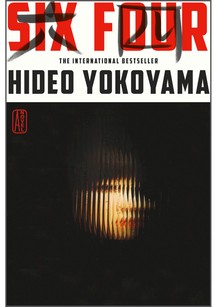Having sold one million copies in a week when it debuted in Japan in 2012, Hideo Yokoyama's Six Four arrives in America as one of the most anticipated titles of the year. It takes place during a week in the life of a police department press relations officer, Mikami, whose daughter, Ayumi, has recently gone missing. What unfolds is a complex mystery about a notorious cold case named Six Four, involving the kidnapping and murder of a young girl. In a failed sting, the killer escaped with the ransom, to the cops' enduring shame. Fourteen years later, Mikami, who was a detective on the case, discovers a discrepancy in the investigation. Propelled by both dogged principles and grief, he digs further and finds a cover-up—becoming embroiled in what may be a Six Four copycat crime.
If that précis of the nearly 600-page narrative leaves a lot to the imagination, it's because Yokoyama's novel is a Jenga tower, each plot point and peripheral character part of an intricate balance. Readers will want to ascertain the critical details, dead ends, and revelations for themselves.
What is perhaps most striking about Six Four is the number of stories it contains. It probes the cruelty, pettiness and endless face-saving and ass-covering that come with bureaucratic infighting, as well as the anguished obsession that plagues the bereaved. It's an exhaustive police procedural, but one with broken families and, in the relationship of Mikami and his wife, Minako, snapshots of a tender marriage. In one passage, while they discuss their missing daughter, Minako says, "It's possible we'd never have understood her properly, however much we tried.... I just wonder...whether Ayumi just needs somebody else. Someone other than us." It's Yokoyama's gift for that kind of subtle, multivalent storytelling, for gracefully toying with and escaping genre convention, for matching ambiguity with whodunit resolutions, that makes Six Four a demanding and absorbing book.


